Abstract
In general, it is very straightforward to store concept identifiers in electronic medical records and represent them in messages. Information models typically specify the fields that can contain coded entries. For each of these fields there may be additional constraints governing exactly which concept identifiers are applicable. However, because modern terminologies such as SNOMED CT are compositional, allowing concept expressions to be pre-coordinated within the terminology or post-coordinated within the medical record, there remains the potential to express a concept in more than one way. Often times, the various representations are similar, but not equivalent. This paper describes an approach for retrieving these pre- and post-coordinated concept expressions: (1) Create concept expressions using a logically-well-structured terminology (e.g., SNOMED CT) according to the rules of a well-specified information model (in this paper we use the HL7 RIM); (2) Transform pre- and post-coordinated concept expressions into a normalized form; (3) Transform queries into the same normalized form. The normalized instances can then be directly compared to the query. Several implementation considerations have been identified. Transformations into a normal form and execution of queries that require traversal of hierarchies need to be optimized. A detailed understanding of the information model and the terminology model are prerequisites. Queries based on the semantic properties of concepts are only as complete as the semantic information contained in the terminology model. Despite these considerations, the approach appears powerful and will continue to be refined.
Full text
PDF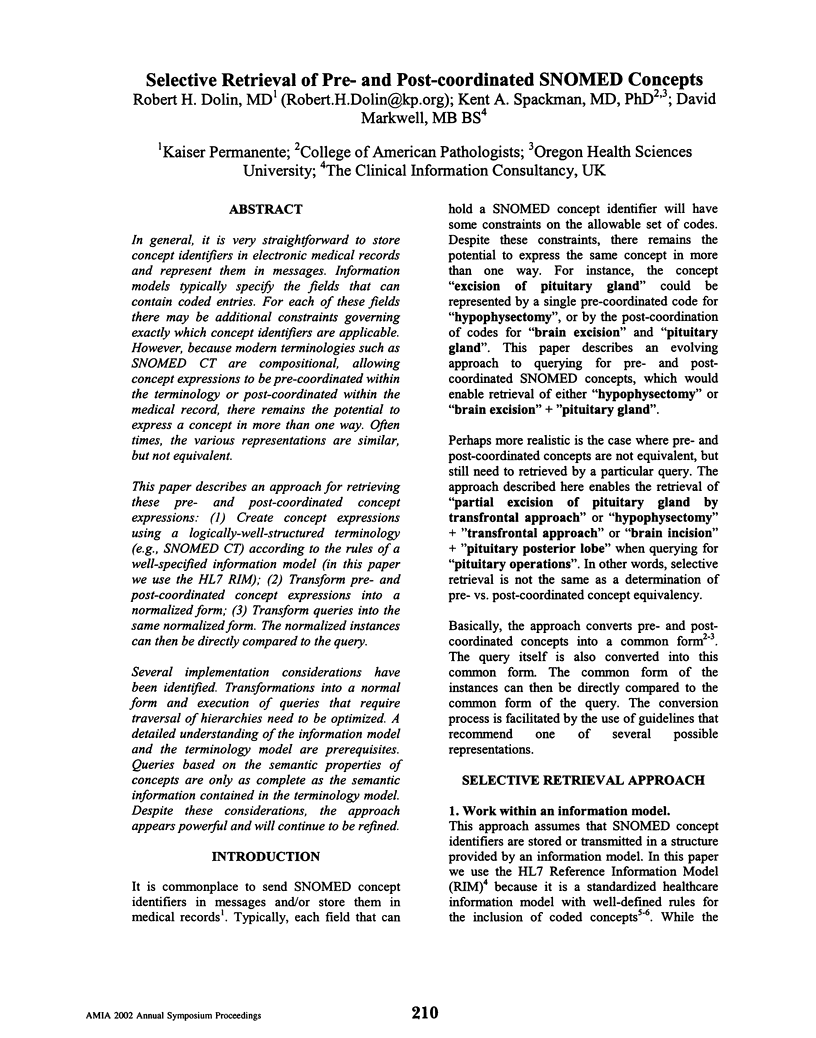
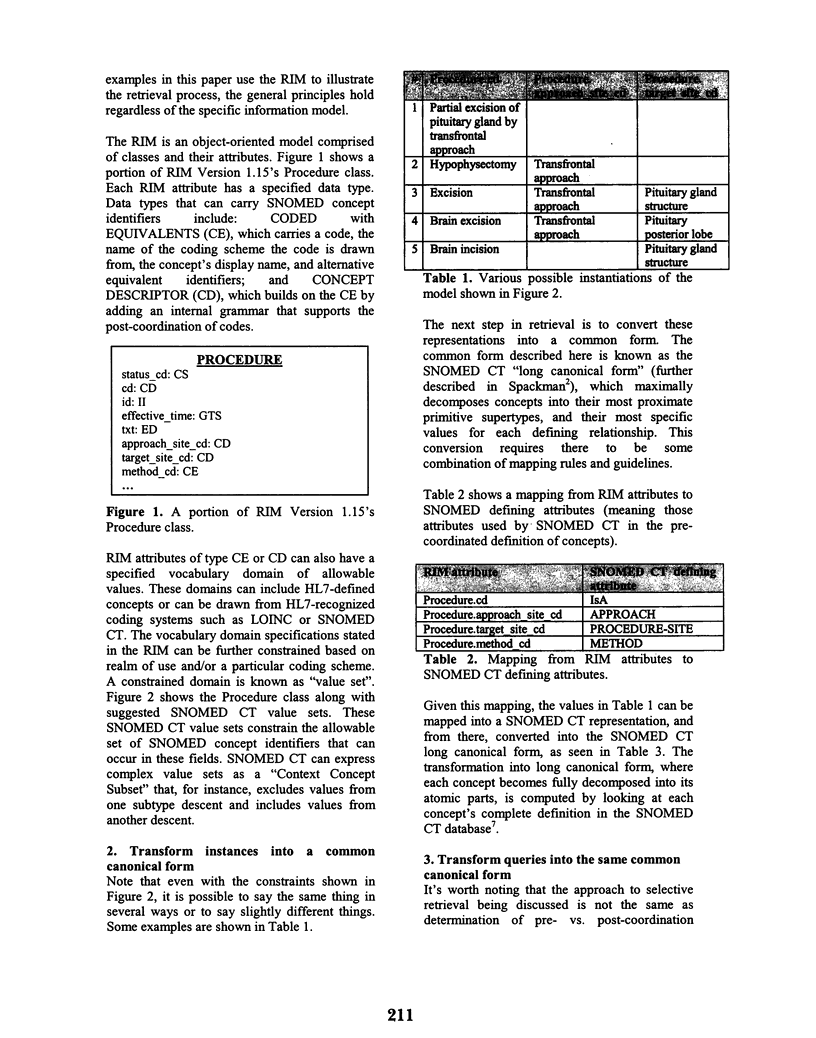
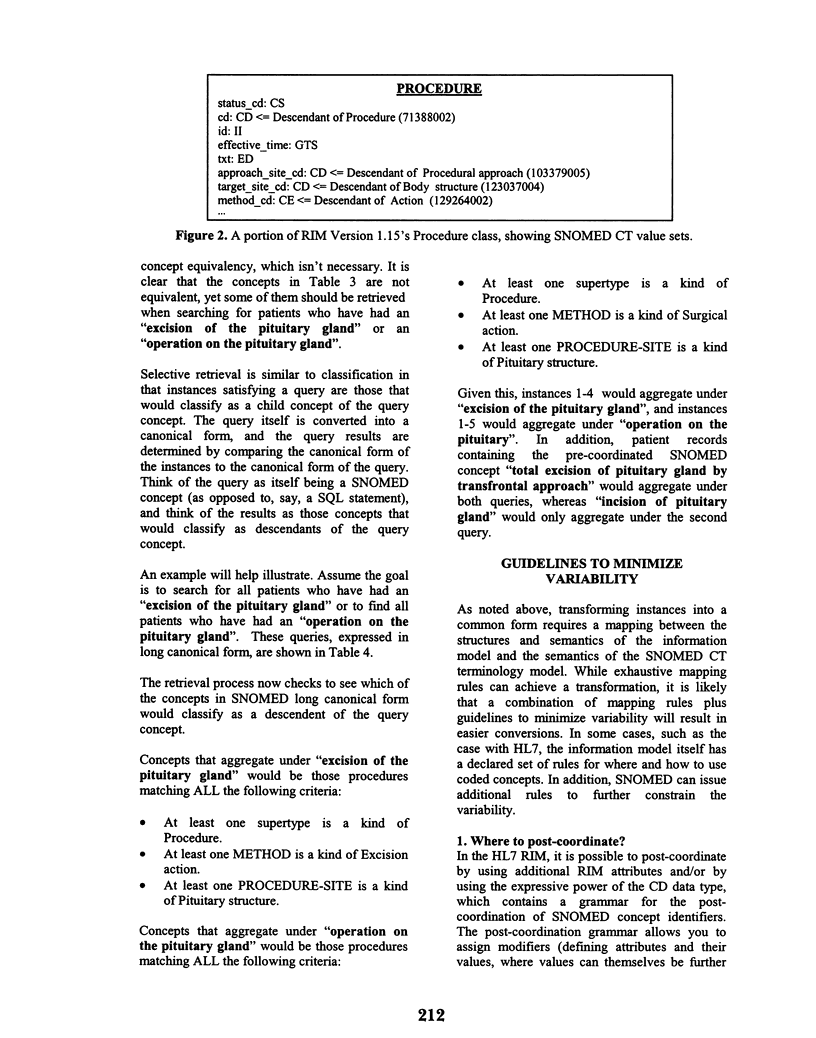
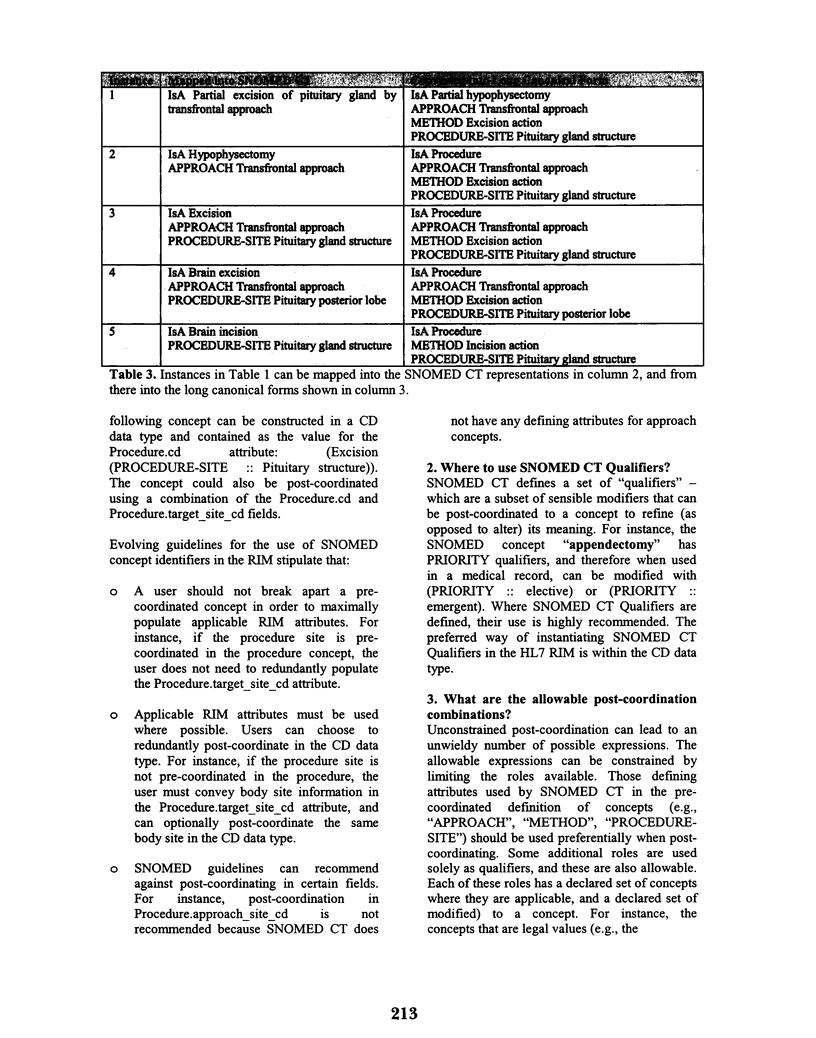
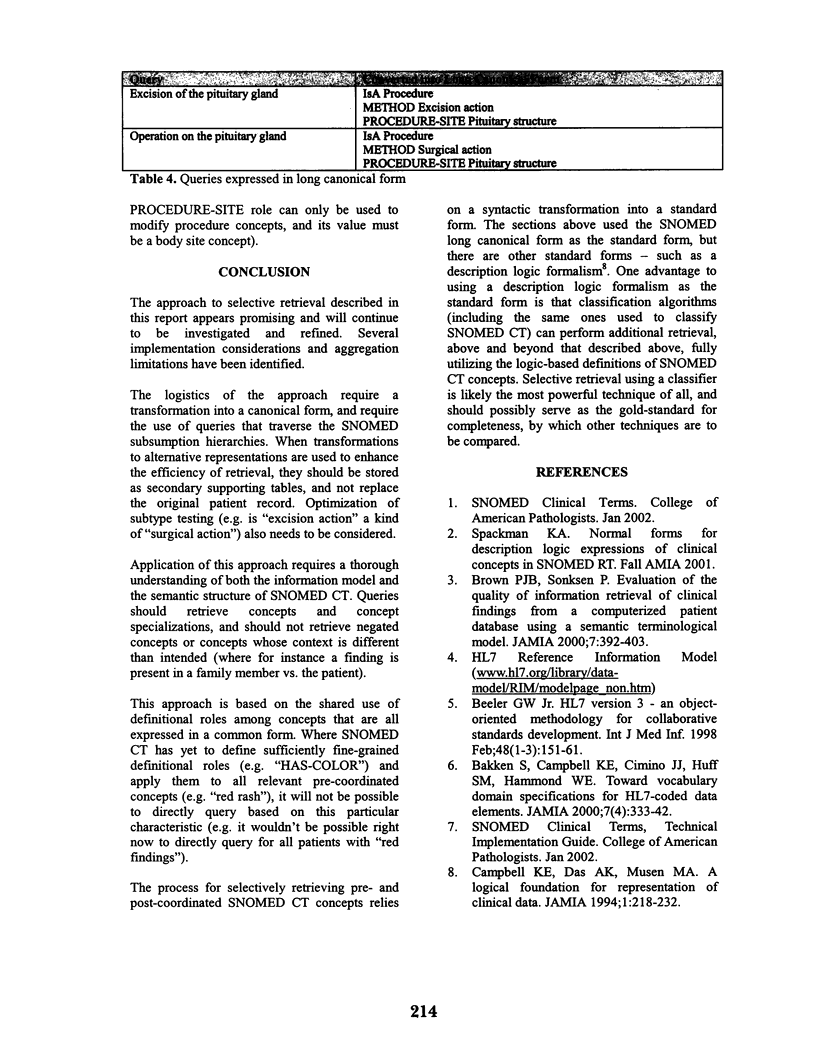
Selected References
These references are in PubMed. This may not be the complete list of references from this article.
- Bakken S., Campbell K. E., Cimino J. J., Huff S. M., Hammond W. E. Toward vocabulary domain specifications for health level 7-coded data elements. J Am Med Inform Assoc. 2000 Jul-Aug;7(4):333–342. doi: 10.1136/jamia.2000.0070333. [DOI] [PMC free article] [PubMed] [Google Scholar]
- Beeler G. W. HL7 version 3--an object-oriented methodology for collaborative standards development. Int J Med Inform. 1998 Feb;48(1-3):151–161. doi: 10.1016/s1386-5056(97)00121-4. [DOI] [PubMed] [Google Scholar]
- Brown P. J., Sönksen P. Evaluation of the quality of information retrieval of clinical findings from a computerized patient database using a semantic terminological model. J Am Med Inform Assoc. 2000 Jul-Aug;7(4):392–403. doi: 10.1136/jamia.2000.0070392. [DOI] [PMC free article] [PubMed] [Google Scholar]
- Campbell K. E., Das A. K., Musen M. A. A logical foundation for representation of clinical data. J Am Med Inform Assoc. 1994 May-Jun;1(3):218–232. doi: 10.1136/jamia.1994.95236154. [DOI] [PMC free article] [PubMed] [Google Scholar]


